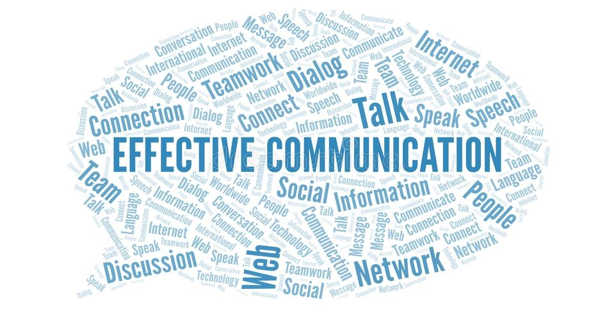A company’s lifeblood is effective communication. A company cannot imagine its success without effective communication.
Communication is effective when the message is understood and when the receiver is encouraged to think and act. The ability to convey information to another person in an effective and efficient manner is defined as effective communication. Business managers with strong verbal, nonverbal, and written communication skills facilitate the exchange of information among employees for the benefit of the company’s bottom line.
Griffin’s definition of effective communication is “the process of sending a message in such a way that the message received is as close in meaning to the message intended as possible.”
Features of effective communication
- Quick in problem-solving
- Strong decision making
- More productivity
- Consistency in the workflow
- Strong business relation
- Better control
- Advanced professional image
- Better response from all stakeholders
In layman’s terms, a business is an enterprise that manufactures products and distributes them to the market in the hope of selling them. In other words, doing business entails being involved in some financial activities.
Characteristics of Effective Communication
The characteristics or principles of effective communication are pivotal for ensuring productive communication. The major characteristics are as follows −
Completeness of the Message – Communication must be complete in order to avoid perplexing the recipient. Better communication aids in the latter’s decision-making process. It builds and improves an organization’s reputation.
Clarity and Integrity of the Message – For better comprehension, the message to be conveyed or sent must be clear and consistent. Clarity of thought and ideas improves the message’s meaning. The message’s gist and substance should be founded on truth and accuracy.
Conciseness of the Message – The intended message must be free of verbosity and written in such a way that it is understandable at first glance. A brief and understandable message sent to the recipient is always appealing and understandable. It saves time and money because it is understood the first time.
Consideration of Physical Setting and Recipient – In order to improve communication effectiveness, the overall physical setting, i.e., the medium of communication and the work environment, must be taken into account. The message’s content must take into account the recipient’s attitude, knowledge, and position.
Clarity of the Message – In order to be understood clearly, the message should have clarity of thoughts and ideas. A clear message employs precise, appropriate, and concrete words and symbols.
Maintaining Courtesy – The sender’s message should be written or prepared in such a way that it is polite, reflective, and enthusiastic. It must demonstrate the sender’s respect for the receiver while remaining positive and focused on the receiver.
Message Correctness – The message should be written in such a way that there are no grammatical errors or sentence repetitions in the final message. The message should be precise, correct, and timely.
So, in order to maximize business profit, business requires ‘Communication’ with its management and external parties. As a result, all business functions or operations ultimately drive to communicate, which is why it is correct to say that business is communication.
















